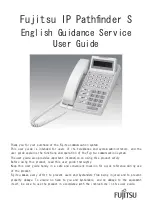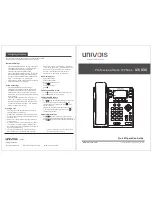
Pub. 42004-467D
Camera Telephone Manual
Page 28 of 30
P:\Standard IOMs - Current Release\42004 Instr. Manuals\42004-467D.docx
04/19
Replacement Parts
Part No.
Description
393
-001C
A
M
394A
L
-001C
A
M
397
-001C
A
M
398
-001C
A
M
233-001
Model 233-001 Security Screwdriver
◼
◼
◼
◼
12562-108
PCBA, Replacement
◼
◼
◼
◼
12562-109
PCBA, Voice Annunciation Kit
◼
◼
◼
◼
51035-005A
PCBA, Keypad Assembly
◼
51035-019
PCBA, Keypad Assembly
◼
69838-001
Sony CC-9606 1/3-inch Super HAD CCD
Sensor
◼
◼
◼
◼
12542-002
Security Screws,
(Torx T-25), ½ inch,
Pack of 15
◼
◼
12516-003
Security Screws,
(Torx T-25), 1-½ inches,
Pack of 10
◼
◼
12520-009
Push Button Replacement Kit (
HELP
)
◼
◼
◼
◼
12520-010
Push Button Replacement Kit
(
CALL/ASSISTANCE
)
◼
◼
12521-004
Microphone Replacement Kit
◼
◼
◼
◼
12522-007
Piezo Speaker Replacement Kit
◼
◼
◼
◼
Specifications
TMA compatibility profile type ............................................................................. GTC SMART Hands-free
Auto-dial digit limit .......................................................................................................................... 24 digits
Electrical
Audio output ............................................. 1 kHz tone—87
±
3 dB SPL @ 1 meter with 40 mA loop current
Battery voltage (tip and ring) ............................................................................................ 24 V dc or 48 V dc
Phone line requirements .............................................................................. loop start, central office (CO), or
analog station port (PBX, PABX, or KSU)
Minimum loop current ................................................................................... 24 mA (35 mA recommended)
Auxiliary output (Isolated solid-state switch) .................................................................. 48 V dc @ 125 mA
28 V
RMS
ac @ 80 mA
RMS
Signaling .......................................................................................................................... DTMF 100 ms tone
Memory ....................................................................................................................... non-volatile EEPROM



































